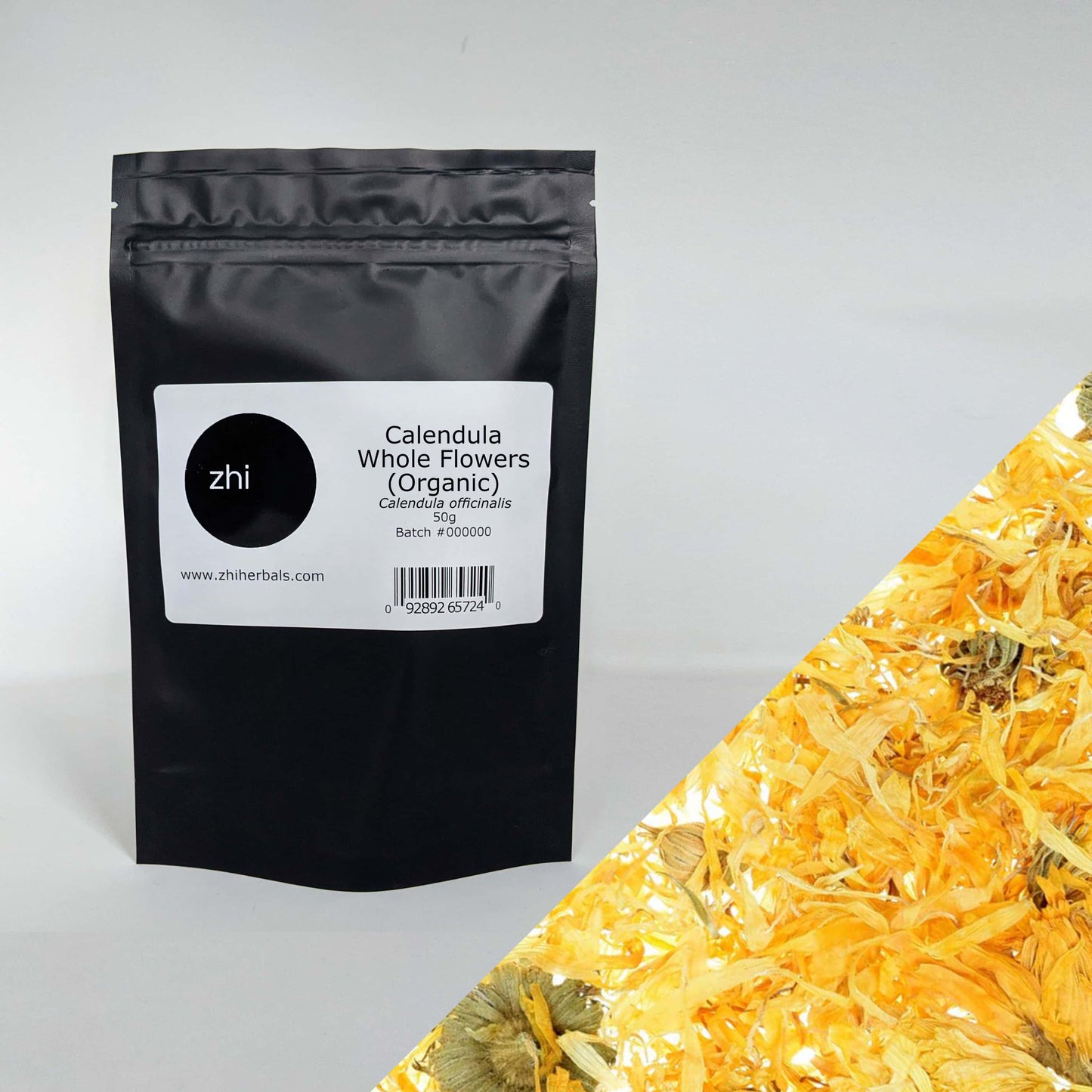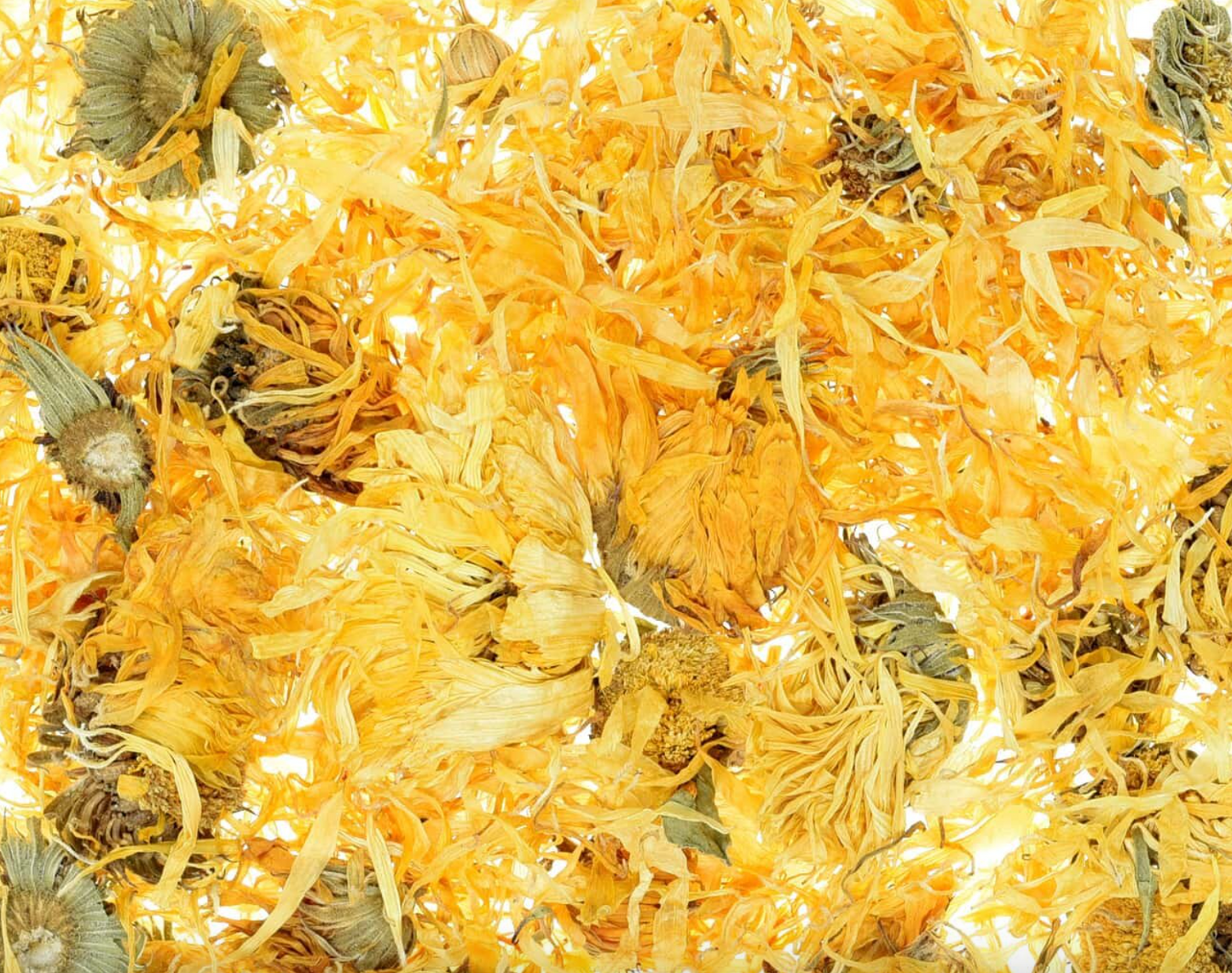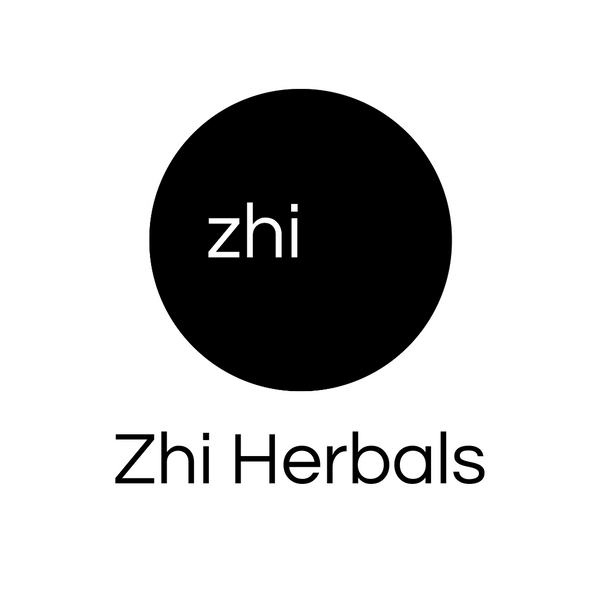Zhi Herbals
Calendula Whole Flowers (Organic)
Calendula Whole Flowers (Organic)
Couldn't load pickup availability
Common Name
Calendula, Marigold, Pot Marigold
Latin Name
Calendula officinalis
Origin
Egypt
What Is Calendula?
Calendula is a medicinal flower that is most recognized for its vibrant yellow and orange blooms, which bloom between May and October. It has been used since at least the 11th century as both a food and a medicine. Calendula flowers are commonly used as an herbal remedy for inflammation, as well as for their antibacterial and anti-fungal benefits.
When used as a cooking ingredient, the dried petals from calendula flowers have some similarities to saffron, and often calendula can be used as an alternative to saffron in recipes.
Calendula flowers have been cultivated for thousands of years. They may have originated in Egypt, however, as calendula is now grown worldwide, its precise country of origin difficult to trace.
How to Use Calendula Flowers (Common Uses)
Calendula can be taken internally as a tea, powder, capsules, or extract. It is commonly used as an ingredient in topical herbal products, and calendula salves, infused oils, and creams are popular remedies that can be made at home. Visit our herbal blog for more inspiration on how to use calendula flowers.
Medicinal Uses and Benefits of Calendula Flowers
Ayurvedic medicine classifies calendula to be cooling, bitter, and pungent. Traditional Chinese Medicine classifies calendula as energetically neutral and drying. Regardless, calendula is a powerful herb with many uses.
Calendula is best known for its anti-inflammatory properties, especially in regards to the gastrointestinal tract. Calendula is also antibacterial, antifungal, antiviral, and an immune and lymphatic system stimulant. It may be used during colds, flus, and viral infections. Calendula is an excellent source of antioxidants.
Externally, calendula is often used for rashes, skin irritation, sunburns, and minor wounds. It can help reduce skin inflammation and is especially indicated for wounds that are slow to heal. Calendula mouthwash or oral rinses are a popular use of the flower, helping to relieve general irritation or heal from dental surgery. It may also be useful for gingivitis.
Often found in both external body care products and herbal formulas for internal use, calendula is a gentle herb. Topical applications of calendula are generally safe for children and babies. Some of the most popular topical uses of calendula include remedies for varicose veins, cracked nipples caused by breastfeeding, fungal infections, and bruising.
Calendula can promote bile production, and is a gentle way to stimulate digestion. It may be especially useful when gastrointestinal irritation is also present, such as ulcers, as the anti-inflammatory effects of calendula can help to reduce digestive irritation.
Thanks to its many uses, calendula plays a key role in several of our tea blends. You can find it in our Anti-Candida Tea, Cough and Cold Tea, Lung Revitalizing Tea, and Stomach Healing Tea.
Active Constituents in Calendula Flowers
Flavonoids, triterpenoid esters, steroidal saponins, carotenoids, calendulin, mucilage, polysaccharides, volatile oils.
Notable Facts About Calendula
Calendula is associated with the element of fire.
Some believe that calendula flowers strung outside doors will help to protect against negative energies.
Calendula has been associated with both the Virgin Mary and Queen Mary.
African marigold, also known as ‘Tagetes’, are often confused for one another, however, they are not the same plant.
Those who are sensitive to chamomile or other herbs in the ragweed family may experience allergies to calendula.
Share


Whole flower heads and not just dried petals. Fast delivery, love the packaging
great quality and quick delivery! I was very impressed :)
I love these herbs, they are a great quality and they arrived very promptly!
As described


